Living Things Created For Man

There is no need to explore a rain forest or beneath the sea, with a microscope or technological equipment, to comprehend the magnificent variety of life on Earth. All you need to do, is look at the plant and animal species around you in order to realize that you live in a world along with living things of all kinds. However, most people either ignore this fact or feel no need to think about it, and thus fall into a serious error, because biodiversity is essential to the countless balances on Earth and to human life. To obtain a better understanding of its importance, consider what we obtain thanks to different forms of life and what we would lose if they were to disappear.90
From birth to death, we humans make use of these micro-organisms, both plants and animals, but pay them nothing in return. Ruth Patrick, an expert on biological diversity of the Philadelphia Academy of Natural Sciences, describes how what living things give us is truly priceless:
... the presence of a great number of species with different structures, different chemical compositions, and different lifespan form one of the most important bases of life for humans throughout our planet. 91
The well-known Stanford University Professor of Biology Paul Ehrlich expresses the same idea in these words:
... microorganisms, plants, and animals play in providing free ecosystem services, without which society in its present form could not persist. 92
Paul Raven, a professor of biology and expert on biodiversity, describes how living things play a vital role in making the Earth a planet fit for human life:
Human existence depends inextricably on other life forms. All humans need Earth's flora, fauna, and microorganisms for sustenance, materials, energy, and even the air they breathe. 93
Professor Bryan Norton of South Florida University refers to the value of the species richness on Earth:
The value of biodiversity is the value of everything there is. It is the summed value of all the GNPs of all countries from now until the end of the world. We know that, because our very lives and our economies are dependent upon biodiversity. If biodiversity is reduced sufficiently, and we do not know the disaster point, there will no longer be any conscious beings. With them will go all value—economic and otherwise. 94
We can witness the benefits we obtain from the plant animal species around us every day. However, there are also countless living things we cannot see with the naked eye, or which we know nothing about. Professor Paul Ehrlich makes the following comment:
... the basic point is that organisms, most of which are obscure to nonbiologists, play roles in ecological systems that are essential to civilization. 95
Advances in technology have revealed a number of facts concerning the importance of the diversity on Earth. Many living things that were previously regarded as unimportant or useless provide human beings with new blessings. For example, a peculiar-looking marine worm contains chemical substances used in the treatment of sick people. Or consider the recently discovered bacteria species that promise great benefits for humanity. For example, one species of bacteria found in the Potomac River in the USA can break down the chlorofluorocarbon gasses that damage the ozone layer.96 And the bacterium Thermus aquaticus, discovered in the thermal springs in America's Yellowstone National Park, played a significant role in the advancement of genetic science.97 Thanks to an enzyme obtained from this micro-organism, the polymerase chain reaction (PCR) technique was developed—an inseparable component of the Human Genome Project, genetic testing and genetic analysis. This made it possible for the process of producing DNA profiles, which had taken weeks back in the 1980s, to be performed in a much shorter time.98
Living things make countless contributions to the ecosystems and balances on Earth, not just to human life. These contributions' importance and complexity are described with an example in an article titled "Ecosystem Services' Benefits Supplied to Human Societies by Natural Ecosystems" written by 11 recognized experts99 from various American universities:
Imagine, for example, human beings trying to colonize the moon. Assume for the sake of argument that the moon had already miraculously acquired some of the basic conditions for supporting human life, such as an atmosphere, a climate, and a physical soil structure similar to those on Earth. The big question facing human colonists would then be, which of Earth's millions of species would need to be transported to the moon to make that sterile surface habitable?
One could tackle that question systematically by first choosing from among all the species exploited directly for food, drink, spices, fiber, timber, pharmaceuticals, and industrial products such as waxes, rubber, and oils. Even if one were highly selective, the list could amount to hundreds or even thousands of species. And that would only be a start, since one would then need to consider which species are crucial to supporting those used directly: the bacteria, fungi, and invertebrates that help make soil fertile and break down wastes and organic matter; the insects, bats, and birds that pollinate flowers; and the grasses, herbs, and trees that hold soil in place, regulate the water cycle, and supply food for animals. The clear message of this exercise is that no one knows which combinations of species—or even approximately how many—are required to sustain human life.
Rather than selecting species directly, one might try another approach: Listing the ecosystem services needed by a lunar colony and then guessing at the types and numbers of species required to perform each. Yet determining which species are critical to the functioning of a particular ecosystem service is no simple task. Let us take soil fertility as an example. Soil organisms are crucial to the chemical conversion and physical transfer of essential nutrients to higher plants. But the abundance of soil organisms is absolutely staggering. Under a square yard of pasture in Denmark, for instance, the soil is inhabited by roughly 50,000 small earthworms and their relatives, 50,000 insects and mites, and nearly 12 million roundworms. And that tally is only the beginning. The number of soil animals is tiny compared to the number of soil microorganisms: a pinch of fertile soil may contain over 30,000 protozoa, 50,000 algae, 400,000 fungi, and billions of individual bacteria. Which must colonists bring to the moon to assure lush and continuing plant growth, soil renewal, waste disposal, and so on? Most of these soil-dwelling species have never been subjected to even cursory inspection: no human eye has ever blinked at them through a microscope, no human hand has ever typed out a name or description of them, and most human minds have never spent a moment reflecting on them. Yet the sobering fact is, as E. O. Wilson put it: They don't need us, but we need them.100
Clearly, the scientists who wrote this paper are pointing out that despite all the progress made in science, the vital role played by living things in ecological systems has been realized on recently. One thing is known for certain: Biodiversity makes the Earth an environment where all the conditions necessary for human beings are met. Obviously, the millions of species that act constantly on our behalf could not have come into being spontaneously or through series of coincidences; they were created and placed at our service by our Lord, the infinitely bountiful.
This chapter shall examine the outlines of a very small part of the blessings bestowed on us by the richness of species; and in this way, answer to some extent the question of why there exists such magnificent diversity on Earth.
1) The Plants and Animals that are Our Food Sources
We must eat and drink to stay alive—that's how we obtain the proteins, amino acids, carbohydrates, fats, vitamins, minerals and fluids essential to the many processes taking place in our trillions of cells. The striking point here is that eating is not difficult, troublesome or inconvenient, but a function we enjoy. We derive great pleasure from the tastes of the matchless foods, drinks, fruits, vegetables, cakes, sweets and pastries that meet our daily nutritional requirements. Try to recall all the delicious foods and drinks you have tasted up to now. The fruit juices you drink to quench your thirst, the melons or watermelons you eat in the heat of summer, the lamb chops or fish cooked on a barbeque, ice cream, chocolate, pastries, rice pudding, ravioli, strawberry cake, rice, honey...
All these delicious foodstuffs that meet our needs, we obtain from plants and animals. In different parts of the globe there are different cereals, fruits, vegetables, and marine and terrestrial animals with different chemical structures and nutritional values. For example, human beings consume around 100 million tons of fish a year. 101

Yet only a small part of the biological variety existing today is actually used. According to the well-known environmentalist Norman Myers, for instance, human beings throughout the course of history have made use of 7,000 species of plants for nutritional purposes.102 On the other hand, it is estimated that the total number of edible plants is at least 75,000.103 Tropical regions in particular are full of thousands of plant species of a high nutritional value. Professor Peter Raven states that some of the 250,000 species of flowering plants can be grown in regions where agriculture is still not possible, to provide useful products.104
Most people cannot properly comprehend the importance of biodiversity. They imagine that all they require are a few cereals such as wheat, rice and maize, a number of fruits and vegetables, and a few herds to provide meat and milk. Of course these few species are sufficient for a person's nutritional requirements. However, these also depend, directly or indirectly, on a wide range of bacteria, animals, insects and micro-organisms. Maurizio Paoletti of Pauda University says that:
Thousands of plants and animals and microorganisms are associated in rural ecosystems in the cycle of crop or animal production. Most of these are still little known. 105

Consider the food chain that links together millions of living species in a flawless cycle. Any ecosystem contains producers, such as green plants, consumers, such as animals, and breaking-down organisms such as bacteria and fungi. Green plants, seaweed, algae and some photosynthetic bacteria are matchless food factories, producing millions of sugar molecules every second.106 Each year, photosynthesizing organisms produce about 170 billion metric tons of carbohydrates—about 30 metric tons for every person on Earth.107
Humans, on the other hand, constitute the final link in the food chain. For example, the zander—a freshwater bass and an excellent source of protein for humans—feeds on smaller fish that in turn, feed on invertebrate animals that eat algae. In short, a species we eat for nutritional purposes is closely linked to a great many other living species, from marine organisms too small to be seen with the naked eye to small invertebrates. This same state of affairs applies to all living things that provide us with the vegetable and animal foodstuffs we consume every day.
By setting aside familiarity and prejudice and looking at the living world, we encounter a very great many plants and animals that meet our nutritional needs immaculately, with their chemical structures, attractive smells and delicious flavors. Neither this marvelous harmony nor the countless details of the planet's food chain can be explained in terms of chance. These living things have been specially created and given to us as matchless blessings.

It is He Who made the sea subservientto you so that you can eat fresh flesh from it and bring out from it ornaments to wears. And you see the ships cleaving throught it so that you can seek His bounty, and so that hopefully you will show thanks. (Surat an-Nahl, 14)
It is God, infinitely compassionate and merciful, Who creates the plants and animals that are the sources of the foodstuffs we require. This is revealed in a number of verses:
God is He Who created the heavens and the Earth and sends down water from the sky and by it brings forth fruits as provision for you... (Surah Ibrahim, 32)
It is He Who produces gardens, both cultivated and wild, and palm-trees and crops of diverse kinds, and olives and pomegranates, both similar and dissimilar. (Surat al-An‘am, 141)
Have they not seen how We created for them, by Our own handiwork, livestock which are under their control? We have made them tame for them and some they ride and some they eat. And they have other uses for them, and milk to drink. So will they not be thankful? (Surah Ya Sin, 71-73)
2)Living Things Used in Drug Production
Thousands of micro-organisms, fungi, plant and animal species are being used in the treatment of various illnesses. Many drugs are prepared with chemical substances obtained from living things or duplications of these substances in laboratories. For example, aspirin—an analgesic painkiller familiar to just about everyone, comes from the bark of the willow tree. Quinine, used to treat malaria for the last 70 years, is found in the roots and bark of the cinchona tree. More than 20,000 species of plant are today employed for medicinal purposes.108 According to Professor Norman Farnsworth of Illinois University, plants represent the main source of medicines for some 3.5 to 4 billion people.109
The use of living things, most of whose names we have never even heard of, is increasing every day in the medical and pharmaceutical industries. Taxol, used against breast and ovarian cancer, is obtained from the bark of the north American yew tree. Squalamine, which prevents the development ofcancer, comes from the liver of a species of shark; digitalis, an adjunct treatment for people with heart failure, is obtained from the foxglove. Vinblastine and vincristine, two chemical substances (effective against Hodgkin's disease and infantile leukemia) were obtained from the Algerian violet. Thanks to a clotting agent in the horseshoe crab found in North America and the West Indies, potentially fatal bacteria found in vaccines, pills or medical equipment can be identified.110 Antibiotics used against microbes are generally obtained from bacteria and fungal moulds. More than 3,000 species of plant are used for birth control alone.111

Many living things, including the rabbits pictured here, are used in testing treatments administered to cure diseases and in the manufacture of drugs. There is no doubt that it is God who creates these animals and their properties that serve as cures for diseases and disorders.
Were it not for this diversity in living things, we would have no medical and pharmaceutical industry to speak of. Obviously, many living species have the ability to alleviate certain human diseases and health problems. Despite this, only a very small fraction of the living species in nature have been described, and of those, only an even smaller portion has been studied in detail.
For example, California University's Professor Peter Bryant states that only 1% of the plants in the tropical rain forests have been studied in terms of their medical properties.112 The number of plants and invertebrates that have been investigated comprehensively in terms of whether they are effective against disease is very low.113 Wonderful proteins, molecules and chemical compounds that can liberate human beings from many diseases would already appear to exist in living things.
In addition, bacteria, birds, monkeys, rats, cats, dogs, rabbits, pigs, insects and many other living things are used in medical research and the testing of new drugs and vaccines. For example, the fruit fly drosophila is a laboratory insect widely used in genetic research. The armadillo is one of the few species of animal that can be used to research leprosy.114 The number of animals used annually in scientific studies in the USA alone is 18 to 22 million.115
Never forget, it is God Who creates both disease and cure. The therapies and drugs used in the treatment of disease are simply means. Similarly, the micro-organisms, animals and plants used in the production of treatments and drugs are also just raw materials. It is our Lord, the infinitely compassionate and affectionate, Who creates these living things and their properties that cure diseases and disorders.
3) Biodiversity and Products
Living things represent the basic source of all our needs as well as our luxuries. Think of all the products you use in your daily life: The oil and gas we use for heating; clothing made from wool, cotton or silk; the gasoline that runs our cars, the paper we write on, furniture made from wood or plastic, the oil and petroleum products that represent the backbone of industry; cleaning materials made out of animal and vegetable fats... No doubt that these and similar products are indispensable parts of our lives. Never forget that were it not for living species—miracles of creation that have existed for millions of years—these products would not exist.
Scientists agree that biological diversity represents a matchless treasure store, and that as yet unknown species will also provide boundless benefits. As Professor Wilson puts it, "Wild spaces are an untapped source of new pharmaceuticals, crops, fibers, pulp, petroleum substitutes, and agents for the restoration of soil and water."116
One living group whose features provide major benefits for human beings are bacteria. For example, scientific research in the field of biotechnology makes considerable use of the bacterium Acetobacter xylinum in the production of cellulose, and Alcaligenes eutrophus in the manufacture of plastic.117 Ssome cyanobacteria species can be used in the manufacture of paper and other products obtained from trees.118 According to the results of one study announced in 2002, a species of bacterium, Desulfuromonas acetoxidans, produces electricity by using sea sludge!119 In short, bacteria are matchless factories with the capacity to create a great variety of useful byproducts.
4) Living Models for Technology
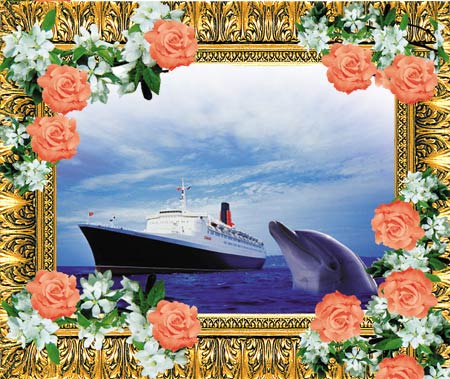
The snout-like protuberances on dolphins' mouths were used as models for the prows of modern ships. Prows shaped like the nose of a dolphin plough through the water with less friction and permit greater speed, with the expenditure of less energy.
Everywhere, from the depths of the oceans to lakes, from deserts to forests, from under the ground to the air itself, the Earth is filled with living things possessed of astonishing properties and systems. Designers, researchers and scientists learn from them: They produce new models and designs by adopting the features of certain plants and animals as their starting points. A great many designs believed to be invented with human ingenuity are actually already in existence in nature. The structures or models of technological products emerging as the result of accumulated knowledge and long years of research have already been present in living things for millions of years.
Models used in technology have been developed by observing and studying the diversity on Earth. Tens of thousands of inventors and researchers today are trying to adapt the superior and extremely efficient systems in living things. Countless possibilities have emerged in this way. For example, chemical substances that can be used in the production of light but strong products are obtained from an animal species whose name one has never even heard of. These products are used in a great many areas, from space to daily life. Professor Wilson states the importance of species diversity:
Biodiversity is the frontier of the future ... The true frontier for humanity is life on earth — its exploration and the transport of knowledge about it into science, art and practical affairs. 120
The properties of living things have always represented an inexhaustible source of inspiration. A great many products of modern technology are imitations of features in nature. For instance, the aeronautic industry has attained its present advanced level by imitating the systems in birds and other flying animals. Inspired by the fins that allow sharks to swim very fast, small components known as "winglets" have been attached to wing tips to improve aircraft performance and also provide considerable fuel savings.121
Dolphins' nose-like protrusions have served as a model for the prows of modern ships. Leading international helicopter manufacturers have produced new models imitating the flight systems of the dragonfly. Robot manufacturers are now trying to develop small robots inspired by anatomy and locomotion found in insects. (Many examples of devices modeled after life forms are provided in our books The Design in Nature and For Men of Understanding.)122
No doubt, living things' superior characteristics that permit us to develop new products and techniques once again better our understanding the sublime nature of God's creation.

Leading helicopter manufacturers have produced functional models by replicating the dragonfly's superior wing structure and maneuvering abilities.
5) Genetic Richness
All living things consist of cells, the most complex structures that science has yet encountered. Cells are the building blocks of life, and the cell's data bank is the DNA molecule. An amazing quantity of information is recorded in the DNA molecule, which is far too small to be seen with the naked eye. For example, in the single DNA molecule of a single human cell, there is enough information to fill an encyclopedia consisting of millions of pages. This giant data bank is encoded using four special bases, known as nucleotides. There are around a million nucleotide pairs and a thousand genes in a bacterium's cell, and between 1 and 10 billion nucleotide pairs and tens of thousands—or even a few hundred thousands—of genes in a plant or animal cell.
Every species' DNA has a different nucleotide sequence—in other words, a different genetic structure. In addition, the data sequence in the DNA molecule is different in every individual of a particular species.
Obviously, in addition to the spectacular species diversity on Earth, there is also an unbelievable genetic diversity. That is the reason why all the millions of species that have ever lived on Earth and all their individual members are so very different to one another. There are wide variations within species, whose individuals possess genetic characteristics appropriate to their environments.
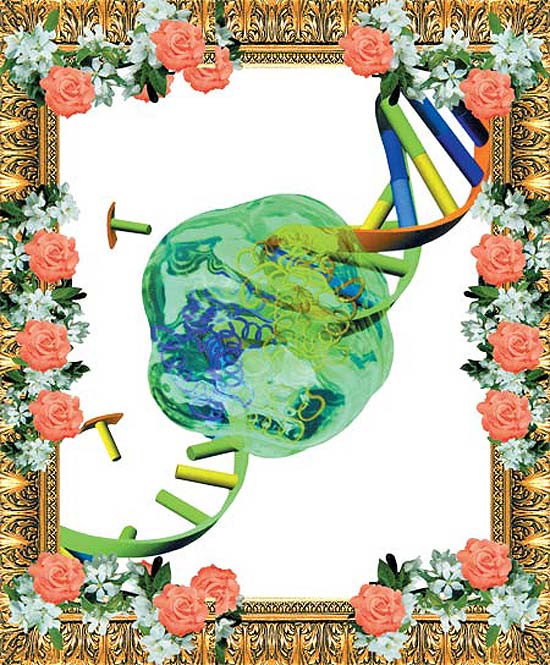
The arrangement of information in the DNA molecule, the cell's data bank, is different in every individual in every species. That is the underlying reason why all the millions of species that have ever lived on Earth and all the countless individual humans are all different from one another.
Thanks to their superb genetic wealth, plant and animal species have been improved over thousands of years: Breeds with desired characteristics are obtained by cross-breeding different varieties of many cereals, fruits, vegetables, plants and animals. For example, breeders employ special mating programs in order to obtain sheep and cattle that give the best wool, meat or milk. They obtain new strains by mating cattle with high meat and milk productivity but with poor resistance to natural conditions with others with low meat and milk productivity, but which are more resistant.123
Crops such as wheat, rice and corn, indispensable parts of our daily lives, have also been improved thanks to their innate genetic diversity. High-productivity varieties that are resistant to disease, climatic conditions and drought have been obtained by crossbreeding wild plant species. For example, it was recently observed that Zea diploperennis, a species of Mexican wild corn, possessed resistance genes to seven viruses that cause disease.124 The genetic structure of this wild corn is worth billions of dollars a year.125 Resistance to a deadly virus carried by the genes of one African species of wild barley and resistance to disease in a species of wild Asian sugar cane have been used to increase the productivity of domestic varieties. One species of wild tomato discovered in the Andes has been used to increase the sugar content of other domestic tomatoes.126 According to World Resources Institute statistics, genetic diversity was the main reason for a two-fold increase in the rice, barley, wheat, cotton and sugar cane harvest in the United States between 1930 and 1980, as well as a three-fold increase in tomatoes, and a four-fold increase in potatoes and maize.127
Contrary to the distortions made by certain circles who seek to use biodiversity to further their own ideologies, it has absolutely nothing to do with the fictitious theory of evolution. Proponents of evolution try to portray the variations and genetic diversity in nature as evidence, by misleading those who have little information on the subject of biology. However, genetic diversity within a species consists of the exchange of biological information already possessed by members of that species to produce offspring with new genetic combinations. Therefore, no new genes nor any new species emerges as a result of genetic variation. Species are always the same species, because their genes are always the same. Existing genes are merely brought together in different combinations, which has nothing at all to do with any supposed process of evolution.
Genetic diversity is one of the most important links in Earth's complex ecological chain. Paul Ehrlich, Professor of Biology at Stanford University, explains:
Aside from nuclear war, there is probably no more serious environmental threat than the continued decay of the genetic variability of crops.128
Most advances in the fields of agriculture and biotechnology have been made possible thanks to the boundless scope of biodiversity. As Professor Ehrlich says:
Natural ecosystems maintain a vast genetic library that has already provided people with countless benefits and has the potential for providing many, many more. 129
6) Living Things Used in the Biological Struggle
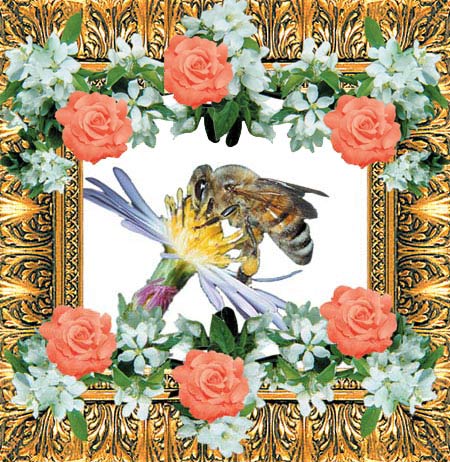
Wild bees that feed on the larvae of insects that damage domestic fruit are some of the organisms employed in the struggle to control agricultural pests.
An increase in the numbers of insects that can harm agricultural land, orchards or forests is prevented by means of various other life forms. Various birds, spiders, insect parasites, wild bees, flies, ladybirds and species of fungus and many other organisms keep 99% of insect pests under control.130 Species of which most people take little notice play an important role in the stabilization of ecological balances. It is estimated that these beneficial organisms contribute billions of dollars to the economy every year by protecting crops and reducing the need for insect pesticides.131 Bearing in mind that pesticides are damaging the balances in nature, kill useful species, and have a negative impact on human health, the importance of these helpful organisms to control harmful insect pests becomes even clearer.
For example, the European corn weevil Pyrausta nubilalis and the Japanese insect Popillia japonica are being eradicated through the use of natural predators and parasites. Wild bees that feed on the larvae of insect pests that attack fruit are released into Californian fruit farms after they have been raised for that purpose.132 In conclusion, different species have different tasks in the maintenance of the balances in nature.
Whenever "insects" are mentioned, most people think of those that damage crops or human health. Yet this is a grave misconception, since it is known that most insects are beneficial.133 Insects play a major role in the food chain on land, in the fertilization of flowering plants, in the cleaning of the Earth, and many ecological balances. To put it more accurately, human life is directly or indirectly dependent upon insects.
7) The Role of Living Things in the Recycling of Elements and Compounds
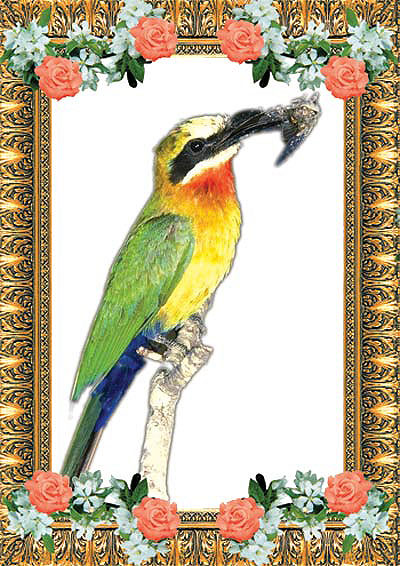
The total mass of all the organisms that have ever lived is many times greater than the total mass of the carbon and nitrogen atoms on Earth. Therefore, since the amount of carbon, nitrogen and other atoms on Earth is finite, and since no important additional quantity reaches it from space, how does life survive?
The answer that there is a constant exchange and circulation of elements in the structures of living things. Nothing is wasted, therefore. The compounds in plant and animal corpses and dead organisms do not go to waste, but are reused repeatedly, thanks to the flawless recycling systems in nature. These cycles are to a large extent performed by living things we humans never see and have never even heard of.
One of these recycling processes involves the element of carbon. As we know, plants absorb carbon dioxide—consisting of one carbon and two oxygen atoms, CO2—to perform photosynthesis. However, this is not sufficient to maintain the carbon balance, because a large amount of carbon remains gathered in dead plants and animals. At this point, bacteria and fungi enter the equation and release the carbon in dead bodies back into the soil and atmosphere.
The nitrogen cycle is also of great importance to the continuation of life. Plants need nitrogen to synthesize amino acids and proteins. Yet they cannot make direct use of the gaseous nitrogen in the atmosphere, but absorb it in the form of nitrates from the soil. This conversion is the work of various micro-organisms. Nitrite bacteria convert nitrogen into a form that plants can use. Human beings and animals obtain the nitrogen they need from plants, but single-celled organisms are of essential importance in converting nitrogen into forms that can be used by other living things.
If there were insufficient nitrogen in the soil, then plants, and thus human beings and animals that depend on them, could not exist. And in nitrogen levels were any higher than they are, then the poisonous gas nitric oxide NO—which causes air pollution and acid rain and which damages the ozone layer and the ecology—would accumulate in the atmosphere. Drinking water would become polluted, and lakes, rivers and other freshwater ecosystems would be damaged.134

Elements in the structures of living things are in a constant cycle of movement. Animal wastes and dead organisms do not cease to exist, but are re-used by other organisms, thanks to the perfect recycling system in nature. One of these basic systems is described as the carbon cycle.
Forests perform an important function in the circulation of water on Earth.135 Rain or melted snow absorbed by the soil returns to the atmosphere in the form of water vapor as the result of the transpiratoin of plants and trees. An enormous amount of water vaporizes through the leaves of trees: Plants work like living pumps that release water into the atmosphere by passing up through their stems and branches. In this way, water is constantly being recycled without disappearing into the ground.
In addition, living things also play important roles in the global recycling of such elements as phosphorus, sulfur and others. One point requiring emphasizing is that these cycles operate with perfect efficiency. Despite all the advanced technological means of the age we live in, only about 10% of our waste is ever recycled.136 Yet the recycling efforts carried out by living things for millions of years is nearly 100%. No doubt, this is one of the countless marvels of creation in the system of interconnected living things.
8) Biodiversity's Positive Impact on the Ecosystem
The activities of every ecosystem, be it a lake, or a forest or a coral reef, are largely controlled by living things. As has been mentioned throughout this book, different organisms play major roles in maintaining an environment able to sustain human life. In addition, scientific research has lately revealed that biodiversity increases the productivity of ecosystems, their efficiency and resistance. The more species in a given environment, the healthier and better-ordered is the system's functioning.

As stated in an article titled "Biodiversity and Ecosystem Functioning: Maintaining Natural Life Support Processes," written by 12 scientists137 from various universities, American and European experts have clearly shown that there is a direct correlation between species numbers and efficiency.138 To put it another way, species diversity means high productivity. For example, seven years of research by Prof. David Tilman and his team determined that in any given environment, an area made up of several plant species gives more products than an equal area composed of only a few. A field sown with 16 species of plant produces 2.7 times greater biomass than a field sown with only one.139 According to Professor Tilman, the reason for this is that many species use the resources in the field more efficiently. Every species in the ecosystem can be compared to a different sphere of work in a human society. In the same way that overall well-being increases as these various different jobs increase, so an ecosystem's productivity rises as its number of species increase.140
According to these research and experiments, the reason why productivity increases is the co-operation between species.141 Yet Darwinism has no room for such joint endeavors as co-operation. According to Darwinism, nature is somewhere in which living things struggle to the death, and in which the weak are eliminated. But observations have once again refuted the theory of evolution.
Another fact, recent research reveals is that the diversity of species increases the resistance of an ecosystem. Biodiversity is literally an insurance mechanism against the negative impact of drought, insect pests, disease and climate changes.142 Ecosystems with biodiversity are less vulnerable and less affected by adverse circumstances. In addition, biodiversity influences ecosystems,143 so that following negative conditions an ecosystem re-assumes its former state much faster. In Africa, for example, parts of the Serengeti plains that are rich in species, return to their former state faster after animals have been grazing on them.144
9) Environmental Services Provided by Living Things

Butterflies help to fertilize plants by carrying pollen from flowers' male organs (stamens) to their female organs (pistils).
Have you ever realized how millions of countless living things flawlessly perform tasks that you could never hope to do? The fact is that if these various organisms, great and small, were unable to perform their tasks, neither you nor other living things could exist.
In recent years, studies have been carried out to measure the economic value of some environmental services provided by living things, most of which are beyond price. A team led by Robert Costanza of the University of Maryland in the US, calculated that the Earth provides a minimum of $16-54 trillion dollars worth of "services" to humans per year.145
Oxygen Production: Oxygen, one of the elements essential to life, is emitted by green plants and bacteria known as cyanobacteria. The O2 breathed in by human beings, animals and micro-organisms is constantly replenished through the process of photosynthesis carried out by these organisms, and the balance is thus maintained. Every year, green plants release some 500 billion tons of oxygen into the atmosphere.146 Green plants and some single-celled organisms also play a vital role in regulating gasses in the atmosphere and the temperature on Earth. For example, if the level of carbon dioxide in the atmosphere were not regulated by plants, then the Earth's temperature would rise and the ice caps would melt. As a result, some regions would be flooded, and others would become into deserts, endangering thousands of species.
Fertilization of Plants: One of the ecosystem services is the fertilization of plants and flowers. Some 220,000 species of flowering plant need animals for successful fertilization. More than 100,000 different species take part in this process, including bees, butterflies, flies, birds and even bats,147 which carry pollen from flowers' male organs to female ovaries. Many species of plants in forests, meadows, agricultural lands, orchards and other environments depend on these pollen-carriers. If these creatures disappeared, they would go extinct.
Eighty percent of the plant foods consumed by human beings are fertilized by these animals.148 According to recent research, the economic value of flower fertilization by animals is around $200 billion a year.149 A recent drop in the level of fruit production in certain parts of the USA once again revealed just how important pollen-carrying insects are: The disappearance of wild bee species and an increase in the number of honeybees had a negative effect on the fruit harvest.150

One-third of the vegetable foodstuffs consumed by human beings are fertilized by more than 100,000 different animal species, including such as bees, butterflies, insects, bats, birds and flies. Many plants depend on these animals for their reproduction and survival.
In addition, thousands of animal species also contribute to tree reproduction and the growth of forests by distributing tree seeds. For instance, Pinus albicaulis, a white-barked species of pine tree) reproduces with the help of a bird named Nucifraga columbiana. The seeds of this pine tree lie within a tightly closed cone; the bird propagates new P. albicaulis trees by opening the cone, extracting the seeds and burying them.151 In his book Made for Each Other: A Symbiosis of Birds and Pines, Professor of Forestry Ronald Lanner of Utah State University describes the vital role played by birds in the germination of pines.152
Cleaning Services: What state would your home quickly turn into, if your rubbish were not collected? The same applies to the Earth. If leaves falling from trees, dead animals and plants, rubbish and industrial wastes accumulated, the Earth would become uninhabitable. This is forestalled, however, by the work of ants, termites, mites, fungi, insects, invertebrates and to a large extent, bacteria. Millions of species break down and convert dead organisms and organic wastes into minerals and components that provide foodstuffs for still other organisms. Just like assembly workers in a factory, various bacteria species work in co-operation.
For example, saprophytic bacteria first convert the nitrogen in dead animals or animal wastes into ammonia. Nitrite bacteria then convert the ammonia into nitrites. Thanks to this perfectly functioning system, the environment is cleaned up, organic substances are re-released, and the food needs of living things are met. It is thought that around 130 billion tons (2,600,000,745,162 pounds) of substances are processed and recycled by these living things.153
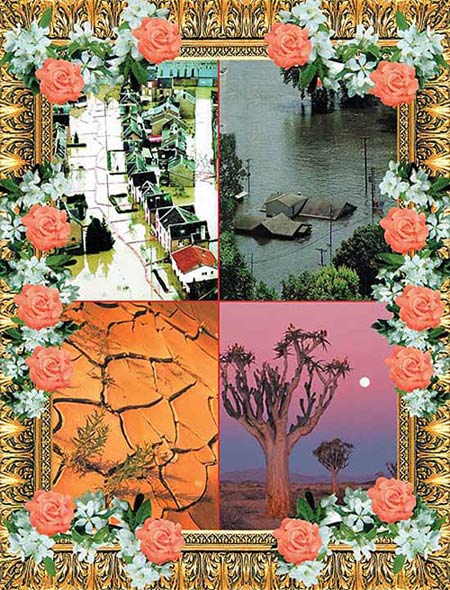
Trees, plants and forests play a role in the maintenance of planet Earth with its balanced climatic structure. The frequent floods and droughts in various parts of the world are a result of the destruction of forests.
Forests made up of various species of tree also make a large contribution to cleaning and disinfecting some 50% of the air, filtering and eliminating harmful gasses and polluted water. One hectare of pine forest absorbs 30 to 40 tons (66,000 to 88,000 pounds ) of dust a year, and a hectare of beech forests absorbs 68 tons (150,000 pounds).154
Many living things are involved in purifying the oceans. For example, mussels carry out the very important task of filtering sea water as they feed, like peerless filters. The reason for the murky appearance of North America's Chesapeake Bay lies in the fact that the mussels there have been harvested to excess. It is calculated that until a few decades ago, mussels filtered all of Chesapeake Bay's water every 3 to 5 days.155 Since the bay is 310 kilometers (192 miles) long and 6 to 40 kilometers (3 to 25 miles) wide, the size of the work performed by these shellfish can be better appreciated.
Bacteria and plants also assist human beings by cleaning up toxic wastes. Some members of the mustard family, for example, absorb heavy metals from the soil and store them in their own tissues, thus purifying the soil of toxins. These species are planted to clean up areas with high levels of wastes and toxic metals such as lead, copper, zinc and cobalt. Some species of bacteria assume the role of breaking down substances that lead to soil and water pollution; they can eliminate a number of waste products that endanger the environment and human health. Bacteria species that break down petroleum can be found in just about all types of soil.156 In the wake of an oil spill in Alaska in 1989, micro-organisms were used to help clean up the coast..
The following case will help clarify the economic implications of the sea, land and atmosphere constantly being cleaned by living things. When the quality of water in New York City recently dropped, officials had two alternatives: One was a water-purification plant costing $6 to 8 billion. The other was the natural improvement of the reservoir carrying water to the city and of the water itself, to cost $1 to 1.5 billion. In the light of these findings, the New York authorities decided to improve the reservoir, because their study showed that this would save $6 billion over 10 years.157
Climate Regulation: Trees, plants and forests play a part in balancing the Earth's climate structure. Forests stabilize the humidity level in the air; in summer, they reduce the temperature by 5 to 8.5 degrees Centigrade (41 to 47 degrees Fahrenheit), and in winter they raise it by 1.6 to 2 degrees (34.7 to 35.6 degrees Fahrenheit), thus moderating heat and cold.158
Deforestation has a negative impact on Earth's water circulation and climatic balances. The frequent floods and droughts currently being experienced in certain parts of the world are some of the consequences.
Soil Conservation: Trees and plants prevent surface erosion and protect soil against the erosive affects of rain and wind. Lester R. Brown, Founder of the World Watch Institute, gives a better idea of the importance of erosion-preventing trees and forests:
Although oil is the first major resource whose supply has been restricted enough to measurably constrain economic expansion, over the long term, the loss of topsoil through erosion is likely to be more important. 159

Trees and vegetation cover prevent erosion; protecting the soil against the erosive effects of wind and rain.
Soil enrichment: The subsoil is full of species that, despite their very small size, perform great tasks and prevent the soil losing productivity. Worms, ants and other animal species mix the soil, aerating and enriching it. The worms in one hectare of land digest up to 10 metric tons of soil a year, and make it more fertile by plowing it up.160
Professor Wilson describes the living species that live in the depths of the soil, most of them unknown to us, but which are nevertheless of the greatest importance:
When you scoop up a double handful of soil almost anywhere except in the barren deserts, you will find thousands of invertebrate animals, ranging in size from clearly visible to microscopic, from ants and springtails to tardigrades and rotifers. The biology of most of the species you hold is unknown: We have only the vaguest idea of what they eat, what eats them, and the details of their life cycle, and probably nothing at all about their biochemistry and genetics. Some of the species might even lack scientific names. We have little concept of how important any of them are to our existence. Their study would certainly teach us new principles of science to the benefit of humanity. Each one is fascinating in its own right.161
What we have cited here represents only a very small part of the services provided by living things. The significance of all this information is clear: We survive thanks to living things that perform tasks more valuable than we can ever imagine. It is God, Lord of the worlds, Who creates all this magnificent variety of life that permits our own survival in flawless harmony.
No doubt, what we obtain from biodiversity are some of the countless blessing created by God for human beings. The size of the blessings He has bestowed is revealed in a verse:
He has given you everything you have asked Him for. If you tried to number God's blessings, you could never count them. Man is indeed wrongdoing, ungrateful. (Surah Ibrahim, 34)

God is He Who created the heavens and the earth and sends down water from the sky and by it brings forth fruits as provision for you...
(Surah Ibrahim, 32)

















